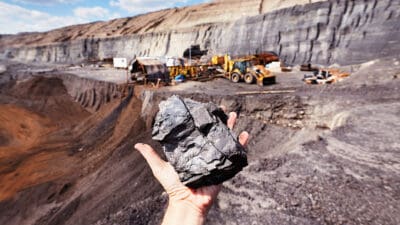Owners of AGL Energy Ltd (ASX: AGL) shares will soon receive their final FY24 dividend payment, and future years could see the payout climb even further.
Investors should know that no dividend payments are guaranteed, and the size of the dividend payment typically follows the direction of a company's profit growth.
AGL's dividends have fallen significantly over the past five years, but we're starting to see a turnaround. The FY24 annual payout was almost half of the FY19 annual payout, but it was 97% larger than the FY23 dividend and 134% bigger than the FY22 payment.
In this article, we're going to look at whether AGL shares are attractive for income-seeking investors.
Projected dividend payouts
The next annual payment will be the 2024 financial year.
Broker UBS is forecasting a sizeable decline in the FY25 annual payout, with a 21.3% reduction to 48 cents per share. That would translate into a dividend yield of 4.1%. AGL said it intends to begin paying partially franked dividends, starting with the FY25 interim dividend.
The AGL annual dividend is then forecast to recover back to 61 cents per share in FY26. Excluding the franking credits, that would be a dividend yield of 5.3%.
There could be another increase to an annual dividend payment of 74 cents per share in FY27, which would equate to a forward dividend yield of 6.4%.
According to UBS, yet another dividend hike could occur in FY28. The payout could slightly rise to 75 cents per share, translating into a dividend yield of 6.5%.
Finally, in FY29, the AGL annual dividend could jump to 86 cents per share, which would be a dividend yield of 7.4%.
Is the passive income yield attractive enough?
Dividend forecasts are not guaranteed, so we shouldn't rely on them too much.
However, it's clear that UBS has an optimistic view on where the dividend payout could go in the next few years – generally higher.
UBS is neutral on AGL shares at the moment, suggesting that at the current price, there are downside risks related to potential "unplanned outages, higher retail transformation costs and/or growth capex". In other words, AGL could suffer if some of its energy generation goes offline, and there's a danger of it needing to spend more on its software project and its green energy investments than expected.
However, UBS also noted that AGL could benefit from possibly higher wholesale electricity and gas prices.
I must disclose that I recently sold my AGL shares, which I bought earlier this year, for a double-digit return. I haven't become overly pessimistic about the business, but I needed some money to invest in another ASX share, and some of my optimistic expectations about the business weren't playing out as I anticipated.
Firstly, the percentage of battery electric vehicles in total new vehicle sales has been reducing in recent times, with hybrid sales growing instead. Part of my bullish case related to AGL benefiting from a growing number of households needing more electricity to charge their electric vehicles, likely charging them overnight. That could still occur, of course, but it may be to a lesser extent than I expected for the foreseeable future.
Second, in my view, once AGL's coal power stations are closed, its future earnings could significantly rely on being able to sell energy to households from its energy storage projects (e.g. hydro) when the sun isn't shining. However, there is a growing effort to install community batteries, among other initiatives that could reduce the importance and financial value of AGL's own storage systems.
While those are not pivotal thesis breakers, I was happy to sell for a market-beating gain to fund my next investment.
In my opinion, I don't think AGL shares currently offer compelling value, and the dividend income doesn't seem large enough to be attractive for income-seekers.









